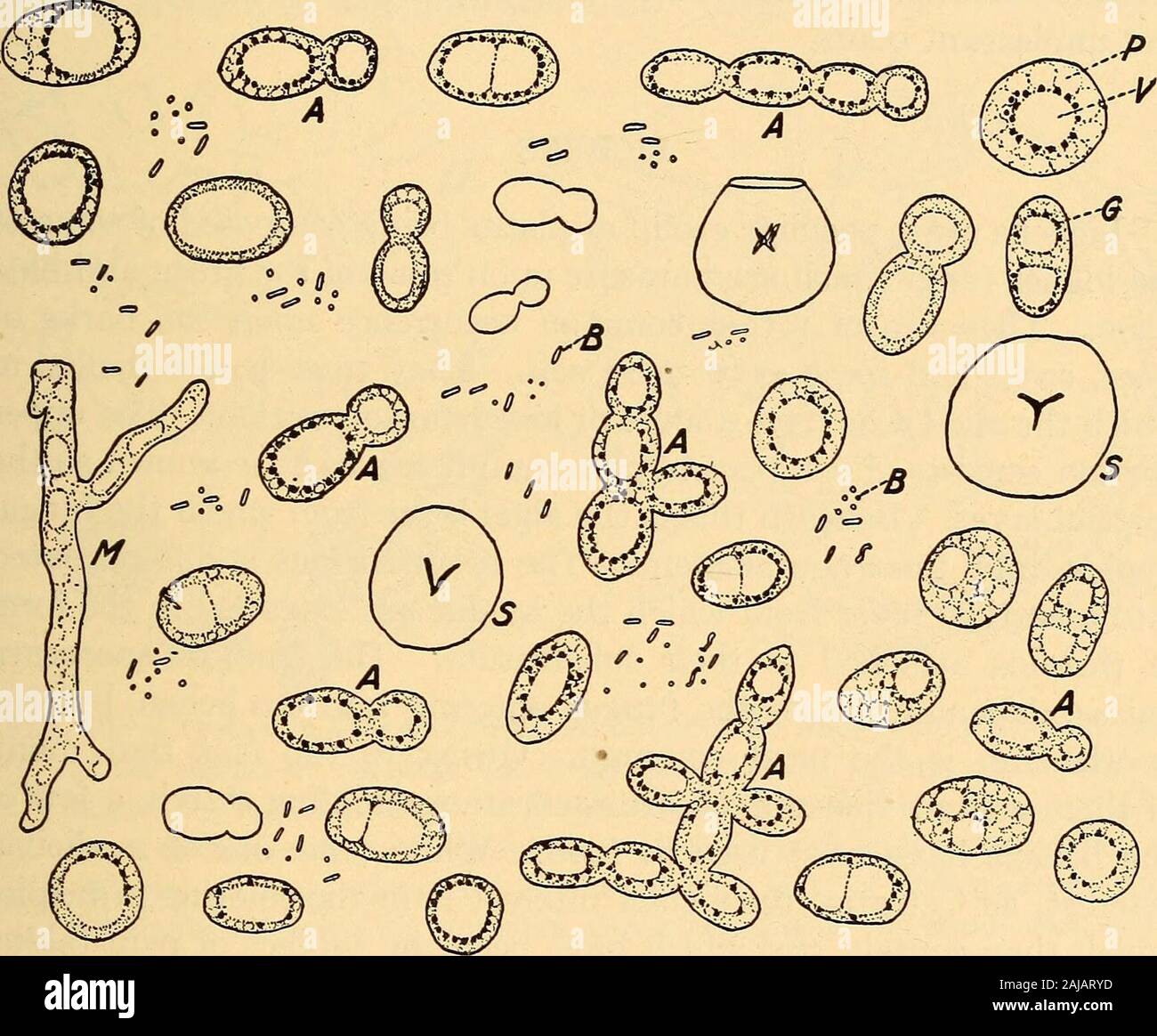Scientific and applied pharmacognosy intended for the use of students in pharmacy, as a hand book for pharmacists, and as a reference book for food and drug analysts and pharmacologists . whichis Saccharomyces, being the organism used in the manufacture ofbeer and compressed yeast. The real Saccharomycetes are capableof forming endospores and are further subdivided according to whetherthey ferment maltose, as brewers yeast, or not. The yeast cell is more or less globular or ovoid in form and varies YEASTS 25 from 0.006 to 0.010 mm. in length (Fig. 9). The wall is very thinand encloses a ramify

Image details
Contributor:
The Reading Room / Alamy Stock PhotoImage ID:
2AJARYDFile size:
7.1 MB (383.6 KB Compressed download)Releases:
Model - no | Property - noDo I need a release?Dimensions:
1739 x 1437 px | 29.4 x 24.3 cm | 11.6 x 9.6 inches | 150dpiMore information:
This image is a public domain image, which means either that copyright has expired in the image or the copyright holder has waived their copyright. Alamy charges you a fee for access to the high resolution copy of the image.
This image could have imperfections as it’s either historical or reportage.
Scientific and applied pharmacognosy intended for the use of students in pharmacy, as a hand book for pharmacists, and as a reference book for food and drug analysts and pharmacologists . whichis Saccharomyces, being the organism used in the manufacture ofbeer and compressed yeast. The real Saccharomycetes are capableof forming endospores and are further subdivided according to whetherthey ferment maltose, as brewers yeast, or not. The yeast cell is more or less globular or ovoid in form and varies YEASTS 25 from 0.006 to 0.010 mm. in length (Fig. 9). The wall is very thinand encloses a ramifying protoplasm with a single nucleus and numer-ous vacuoles. The vacuoles vary in number and the nucleus, in somecases, is of considerable size, being one-third of the diameter of the cell.As the yeast cell grows one end may enlarge, gradually becoming thesize of the original cell. Yeast in this condition is said to be budding.A short chain of cells may be formed in this way, the individuals sep-arating and forming new organisms. Yeast not only multiplies inthis manner but also by the production of endospores which areusually formed when the necessary nutriment is lacking. Certain. Fig. 9.—Yeast cells in compressed yeast and brewers yeast. A, buddingcells; P, protoplasm; G, granules showing molecular motion; M, foreignmold; B, bacteria; S, Cassava starch grains in yeast cake.—Drawing byHogstad. substances have been found to be essential for the growth of yeast;these include sugar, albuminous material or ammoniacal salts, sul-phate of magnesia and potassium phosphate. For the study ofyeasts in the laboratory they may be grown in Pasteurs Solution, consisting of potassium phosphate, 2 gm.; calcium phosphate 0.2 gm.;magnesium sulphate 0.2 gm.; ammonium tartrate 10 gm.; canesugar 150 gm.; water sufficient to make 1000 c.c 26 SCIENTIFIC AND APPLIED PHARMACOGNOSY The action of yeast? upon sugars is to form alcohol and carbondioxide, the former being the important product in the br